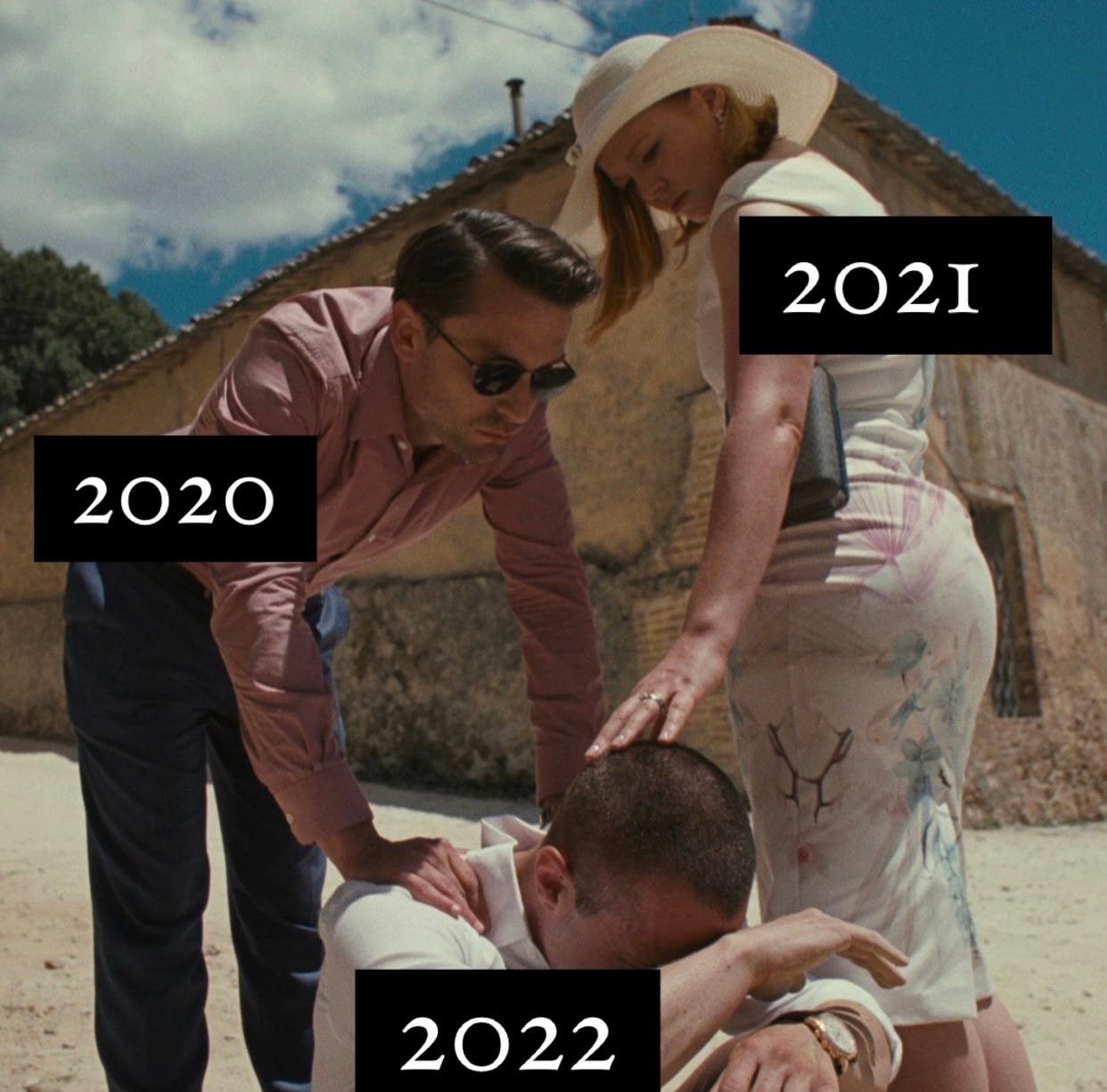December 2021
This newsletter is a compilation of recent disaster ~things~ that I think are cool, important, or otherwise of interest to people who are intrigued with disaster (broadly defined).
There’s a little something for everyone!
Happy End of 2021, Friends!
The state of emergency management is reflecting on some climate justice wins of 2021 and making some climate predictions for 2022.
Best Disaster Writing of 2021
For this month’s newsletter I want to look back at some of the year’s best disaster writing from across the U.S. If you missed any of these now is a good time to check them out!
The Texas Winter Storm And Power Outages Killed Hundreds More People Than The State Says by Peter Aldhous, Stephanie M. Lee, and Zahra Hirji for Buzzfeed
As Manchin Blocks Climate Plan, His State Can’t Hold Back Floods by Christopher Flavelle for The New York Times
The Lie of The Storm by Ko Bragg for Columbia Journalism Review
How Rising Groundwater Caused by Climate Change Could Devastate Coastal Communities by Kendra Pierre-Louis for MIT Technological Review
The Texas Crisis Shows (Again) There’s No Such Thing as a Natural Disaster by Malka Older for Slate
Build Back Better for whom? How Neoliberalism (Re)creates Disaster Risks by Ksenia Chmutina & Wesley Cheek for Current Affairs
My majority-Black city went weeks without potable water. This wouldn’t happen in a Whiter town by Laurie Bertram Roberts for The Washington Post
Why FEMA Aid Is Unavailable To Many Who Need It The Most by Rebecca Hersher and Ryan Kellman for NPR
Communities of Color In Houston Will Face Another Hurricane Season Without Adequate Flood Control by Amal Ahmed for Texas Observer
How the Building Industry Blocked Better Tornado Safeguards by Christopher Flavelle for The New York Times
MEME Break
Getting ready for 2022 like…
Best Bodies of Disaster Work
In addition to specific articles, I want to highlight three people who have created exceptional bodies of disaster work this year.
Carly Berlin for Southerly. There is no other outlet that has been so thorough with their disaster coverage this year. Carly’s work in following the hurricane response and recoveries in Louisiana has been desperately needed, sharp, and insightful.
Colleen Hagerty’s newsletter, ‘My World’s on Fire’. In addition to the extensive discussion of current disasters and solid coverage of recovery and mitigation, she’s also begun a “demystifying disasters” series which is necessary reading for anyone looking to better understand emergency management.
Ed Yong’s pandemic coverage in The Atlantic. From the very beginning of the pandemic, Ed has been able to look across where we are and ahead to where we are going. It’s a particularly useful approach to covering a long-duration crisis that few are consistently doing.
The Book of The Month
Joan Didion passed away last week so I felt it appropriate that this month’s book recommendation is her disaster (if you will) book — Fixed Ideas: America Since 9.11. I happened to re-read this book just this fall for the first time since I was in high school. It was illuminating to revisit the essay on the 20th anniversary of 9/11. More so I was struck by how the criticism takes on more urgent meaning in these current political and pandemic times.
You can buy it here.
The End Bits
I would love it if you’d forward this to your friends, post on social media, and undertake any other form of newsletter sharing you deem appropriate. They can sign-up here.
In case you signed up for this newsletter without knowing who I am (a bold choice!) you can read more about me on my blog, listen to this episode of Ologies, or follow me on Twitter and Instagram where I impulsively narrate my every thought.
Read my book Disasterology: Dispatches From The Frontlines of The Climate Crisis. If you haven’t picked it up yet you can read a review from USA Today here, order it here, or get it as an audiobook here.
The logo was made by my friend Gabi. You can check out her Instagram and hire her for all of your badass art related needs.
Finally, this newsletter is ~FREE~. I plan on keeping it that way because eliminating barriers to disaster knowledge is important. However, several people expressed an interest in financially supporting this work. I’ve created a “paid subscriber” option for $5 a month or whatever you’d like to give. The only difference between a free sign-up and a paid subscriber option is that you’ll be able to see the full archives of the newsletters. Really, this is just a way for those who want (and can) to support the newsletter. I’ll use the money to cover administrative expenses, do things like buy books to review, and maybe one day hire a research assistant to help. Thank you to everyone who has already supported financially!!





